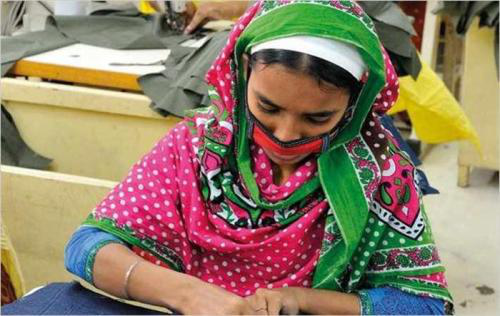Bangladesh: Brands offering lower prices
Nov 23, 2020 | by Zhao xh

Between January and September, the prices of apparel goods exported from Bangladesh were 2.1 percent lower than a year earlier.
Not only are the country’s garment exporters facing cancellations or deferrals of work orders or lower volumes, but the global retailers are also asking for discounted rates from Bangladesh’s garment factories, the second-largest apparel supplier to the world.
Between January and September, the prices of apparel goods exported from Bangladesh were 2.1 percent lower than a year earlier, according to the National Board Revenue data analysed by the Bangladesh Garment Manufacturers and Exporters Association (BGMEA), the sector’s apex trade body. In September alone, the prices of clothing goods fell by 5.2 percent.
“This is the direct impact of the muted consumer demand in the Western world,” the supplier said. And all are in the same boat. “We have witnessed a sharp decline in prices,”said BGMEA President Rubana Huq. Brands are squeezing suppliers further to face the ongoing financial crunches created by the pandemic.
“Unfortunately, this is leaving the supply side extremely vulnerable.” Given the tight spot they are in, the garment exporters are accepting whatever price is being offered. “They are trying to survive this tough period even at a loss hoping for a better future. But this is not sustainable and we call on responsible buying practices from brands,” she added.
Between 2014 and 2018, the prices of apparel products shipped from Bangladesh to the EU declined 3.6 percent and to the US about 7 percent, according to data from the BGMEA.
Between March and October, garment shipments, which bring home more than 84 percent of the export earnings, raked in $16.5 billion, down about 23 percent year-on-year, according to data from the Export Promotion Bureau. And the direct impact of this has been that the sector let go of 70,000 workers. Now the price cuts are posing a fresh risk to the sector’s 4 million mostly female workers’ livelihood.
“With fewer work orders than capacity, the manufacturers are struggling to run their factories as it is very tough to bear the expenses of wages and other costs,” said Abdus Salam Murshedy, managing director of Envoy Textiles.
In the present context, lowering the prices by brands will be a big blow for the manufacturers and this will ultimately impact employment, said Salam, also a former president of the BGMEA. When a manufacturer cannot bear the expenses, then he or she will go for cost cutting by reducing his/her employee count.
“In the present context, both the manufacturers and the retailers are in trouble,” said Khondaker Golam Moazzem, research director of the Centre for Policy Dialogue.
So, the government has to focus on reducing the cost and time doing business by improving the port capacity and the other facilities. On the other hand, Bangladesh needs to increase the capacity of its backward linkage industry, especially in fabrics production, he said, while advising the garment sector entrepreneurs to introduce production engineering to improve efficiency and minimise costs, he added.
Source: dhakatribune.com








